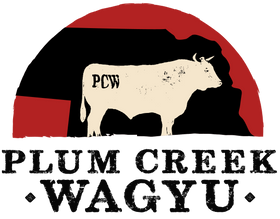Wagyu beef is synonymous with luxury and quality, renowned for its rich flavor and exceptional tenderness. But have you ever wondered about the journey that Wagyu takes from the ranch to your plate? This blog post will walk you through the meticulous process involved in producing this premium meat, highlighting the dedication and craftsmanship that goes into every step.
1. Raising Wagyu Cattle: The Foundation of Quality
The journey begins on the ranch, where Wagyu cattle are raised under strict standards to ensure their health and well-being.
- Breeding and Genetics: Wagyu cattle are bred from genetically superior lines, emphasizing traits such as marbling and tenderness. This careful selection process is crucial for producing high-quality beef.
- Environment and Care: Wagyu cattle are typically raised in stress-free environments, with ample space to roam and graze. This humane treatment contributes to the overall quality of the meat, as relaxed animals yield better flavor.
2. Feeding Practices: Enhancing Flavor and Marbling
What Wagyu cattle eat plays a significant role in the quality of the beef.
- Specialized Diet: Farmers often provide a carefully balanced diet that includes high-quality grains, forages, and vitamins. This diet is designed to promote optimal marbling and flavor development.
- Grain Finishing: Many Wagyu cattle undergo a grain-finishing process, which enhances the intramuscular fat content and contributes to the beef’s signature buttery texture.
3. Harvesting: Ensuring Quality at Every Step
When the cattle reach maturity, they are ready for harvesting. This process is conducted with care to ensure the highest standards of quality and humane treatment.
- Humane Slaughtering: The harvesting process is designed to minimize stress for the animals, following ethical practices that align with industry standards. This humane approach is crucial for maintaining the integrity of the beef.
- Processing: Once harvested, the cattle are processed in facilities that adhere to strict health and safety regulations. The meat is inspected for quality and prepared for distribution.
4. Aging: Developing Rich Flavor and Tenderness
After processing, the Wagyu beef undergoes aging, a key step that enhances its flavor and tenderness.
- Dry Aging: Some cuts of Wagyu are dry-aged, allowing the meat to develop a concentrated flavor and tender texture. This process can take weeks, during which moisture evaporates, intensifying the beef's rich taste.
- Wet Aging: Other cuts may be wet-aged in vacuum-sealed packaging, which helps retain moisture while also allowing the flavors to develop.
5. Distribution: Bringing Wagyu to Consumers
Once the aging process is complete, the Wagyu beef is ready for distribution.
- Packaging: The beef is carefully packaged to preserve its quality during transportation. Vacuum sealing is common to prevent exposure to air and maintain freshness.
- Local and Global Markets: Wagyu beef is distributed to local markets, restaurants, and specialty retailers, ensuring that consumers can access this luxury product. Whether enjoyed at a high-end steakhouse or cooked at home, Wagyu beef is celebrated for its unique qualities.
6. Cooking and Enjoying: The Final Step
Finally, the Wagyu beef arrives on your plate, ready to be enjoyed.
- Preparation Techniques: Whether grilled, pan-seared, or roasted, the way you cook Wagyu can greatly impact its flavor and texture. Simple seasoning with salt and pepper often suffices to let the meat’s natural qualities shine.
- Pairing and Serving: Wagyu pairs beautifully with a variety of sides and beverages, enhancing the dining experience. Consider complementing it with simple vegetables, fine wines, or gourmet sauces.
Conclusion
The journey of Wagyu beef from farm to table is a testament to the dedication and craftsmanship of ranchers, farmers, and chefs. From the careful breeding and humane treatment of the cattle to the precise aging and cooking techniques, every step is designed to ensure that this luxurious meat delivers an exceptional dining experience. The next time you savor a Wagyu steak, you can appreciate the intricate process that brings this remarkable beef to your plate.
Related Posts
Beyond the Steak: Creative Wagyu Recipes for Every Occasion
Take your Wagyu beyond the steak! From juicy burgers to slow-cooked short ribs and mouthwatering tacos, explore creative Wagyu recipes perfect for any occasion.
Mastering the Perfect Wagyu Steak: Cooking Techniques for Every Cut
Master the art of cooking Wagyu steak with expert techniques for grilling, pan-searing, and sous vide. Discover the best methods to bring out the rich marbling and unmatched flavor of every cut.
Pairing Wagyu with Whiskey, Wine, and Cocktails: The Best Drinks to Complement Wagyu Beef
Discover the best drink pairings for Wagyu beef! From rich whiskeys and bold wines to complex cocktails, find out how to complement the rich flavors of Wagyu with the perfect beverage!
Wagyu Myths Debunked: Separating Fact from Fiction
Wagyu beef is often surrounded by myths, from misconceptions about its price to confusion about its fat content. In this post, we debunk the most common myths about Wagyu beef, providing the facts that every meat lover should know.
Wagyu and the Farm-to-Table Movement: How Local Sourcing and Sustainable Ranching Impact Wagyu Quality
Explore how the farm-to-table movement is enhancing the quality of Wagyu beef through local sourcing and sustainable ranching practices. Learn how these practices contribute to better flavor, ethical production, and a positive environmental impact.








